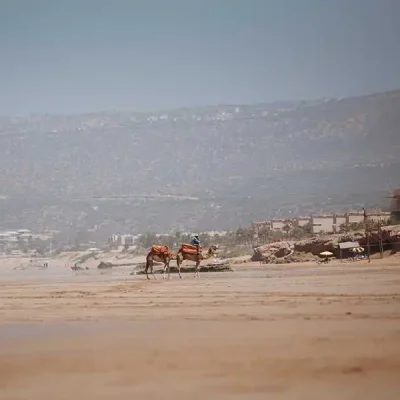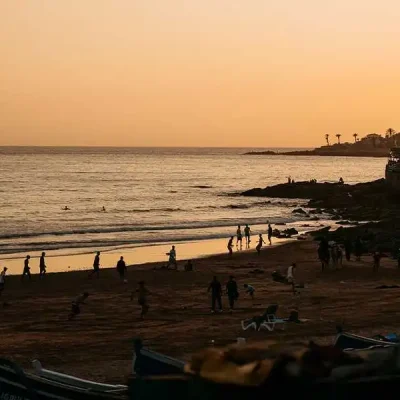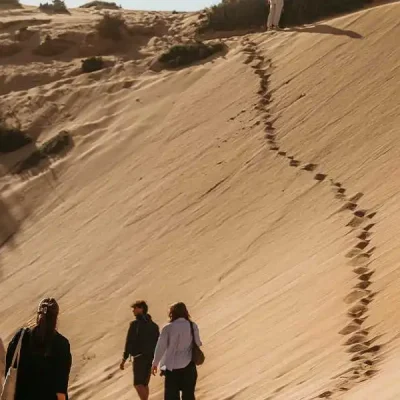The Early Days: The 1960s & 70s
Hippies and Vagabonds: The ’70s saw the first wave of bohemian travelers drawn by the promise of perfect waves, low costs, and a unique culture. They set up simple camps and surfed uncrowded spots, often living a true nomadic surf lifestyle.
The Discovery of Famous Breaks: It was during this period that legendary breaks like Anchor Point, Killer Point, and Hash Point were “discovered” and named. Local stories tell of how these breaks got their names—from a ship’s anchor that became a fixed landmark to the simple way surfers identified the breaks.
The 1980s & 90s: Word Gets Out
- Surfer Culture Takes Root: Local communities began to understand and embrace the growing number of surfers. Families started renting out rooms, and small local cafes became meeting points for surfers to share stories of the day’s waves. The seeds of a surf culture were planted, blending with the existing Berber hospitality.
The 2000s to Today: The Surf Camp Era
The Rise of Surf Camps: Camps like Morocco Surf & Stay emerged to cater to surfers who wanted a more structured, all-inclusive, and hassle-free experience. These camps provided expert coaching, quality gear, healthy food, and a sense of community that appealed to a new generation of surf travelers.
Tamraght’s Emergence: While Taghazout remains the historic heart of the surf scene, Tamraght has grown into its own unique identity. It offers a more laid-back, authentic village feel with a great mix of beginner and intermediate surf spots, making it an ideal base for learning and progression.
International Recognition: Today, Taghazout Bay is firmly on the global surf map, hosting professional surf competitions and attracting surfers of all levels from every corner of the world. The once-quiet fishing villages have become a vibrant, international surf community.






